A marble dining table is more than just a piece of furniture; it is a statement of elegance, timelessness, and functionality. Choosing the right marble dining table can elevate your dining space, blending sophistication with practicality. However, the decision requires careful consideration to ensure you select a table that suits your style, budget, and lifestyle needs. This guide explores the essential factors to consider when choosing a marble dining table, helping you make an informed investment.
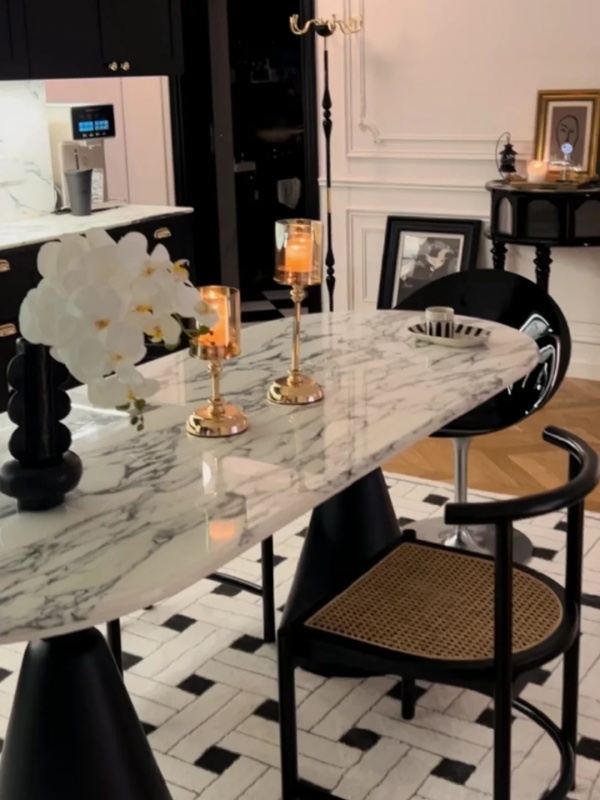
1. Understand the Types of Marble
Marble comes in a wide range of types, each with its unique characteristics, colors, and veining patterns. Understanding the differences will help you choose a table that matches your design preferences and functional requirements.
Known for its soft white or gray background with subtle veining, Carrara marble is a classic choice. It offers a timeless appeal and is one of the more affordable options.
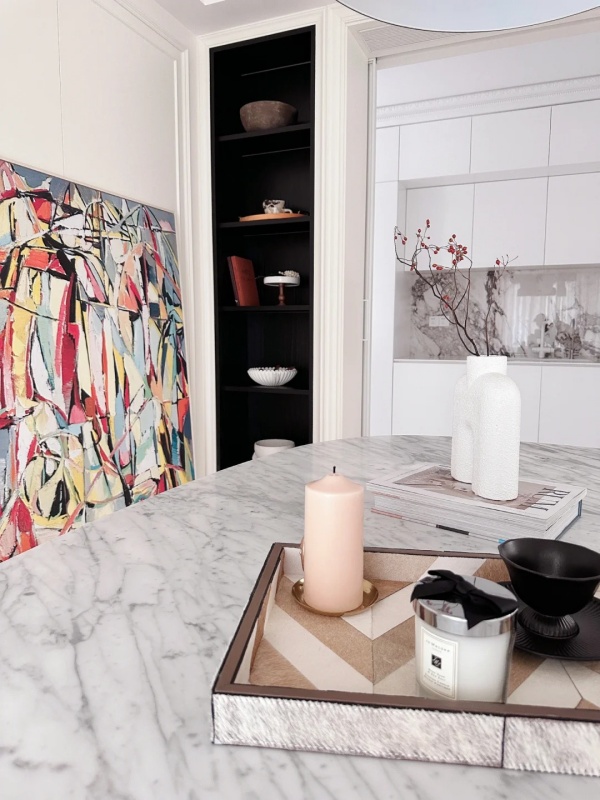
This premium marble is recognized for its bold veining and bright white base. Calacatta marble exudes luxury and works well in modern or opulent settings.
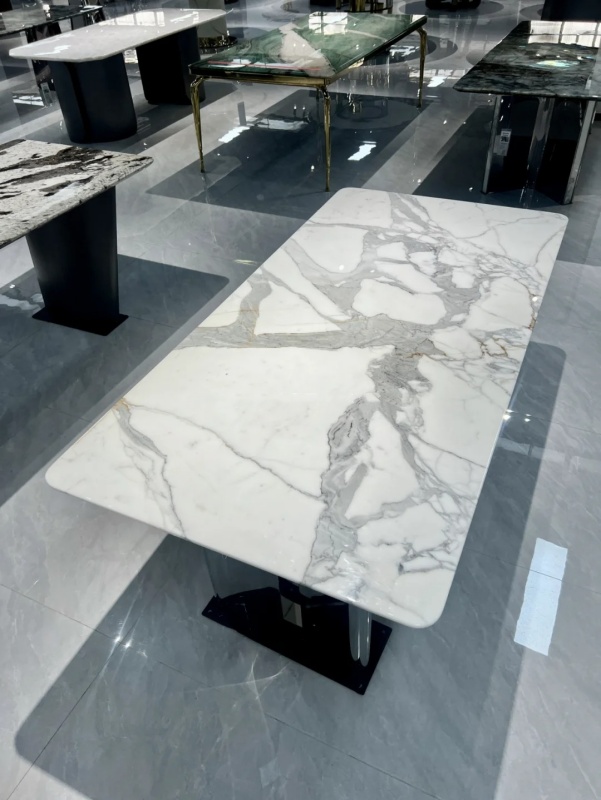
Luxury Marble:
With its rich violet tones and luxury veining, Calcatta Violet marble adds warmth and depth to dining spaces.
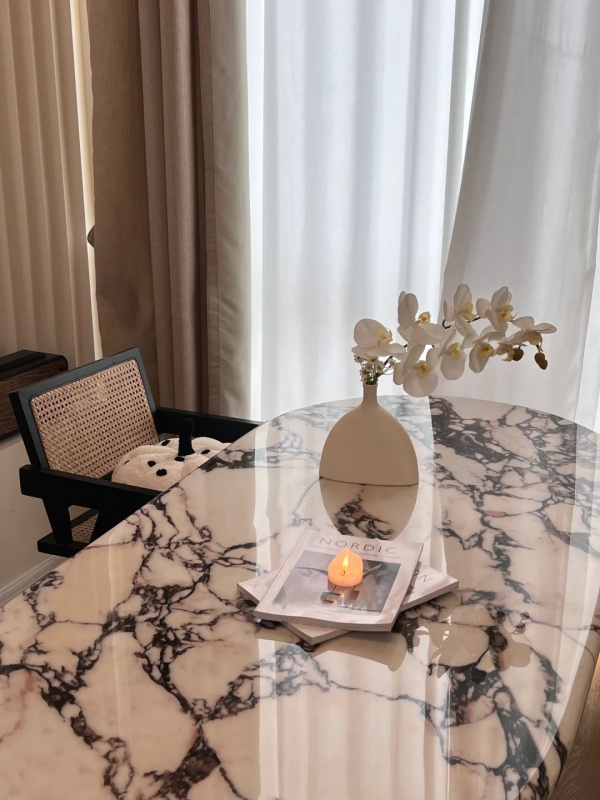
Grand Antique Marble:This black marble with striking white veining is ideal for creating a dramatic and contemporary look.
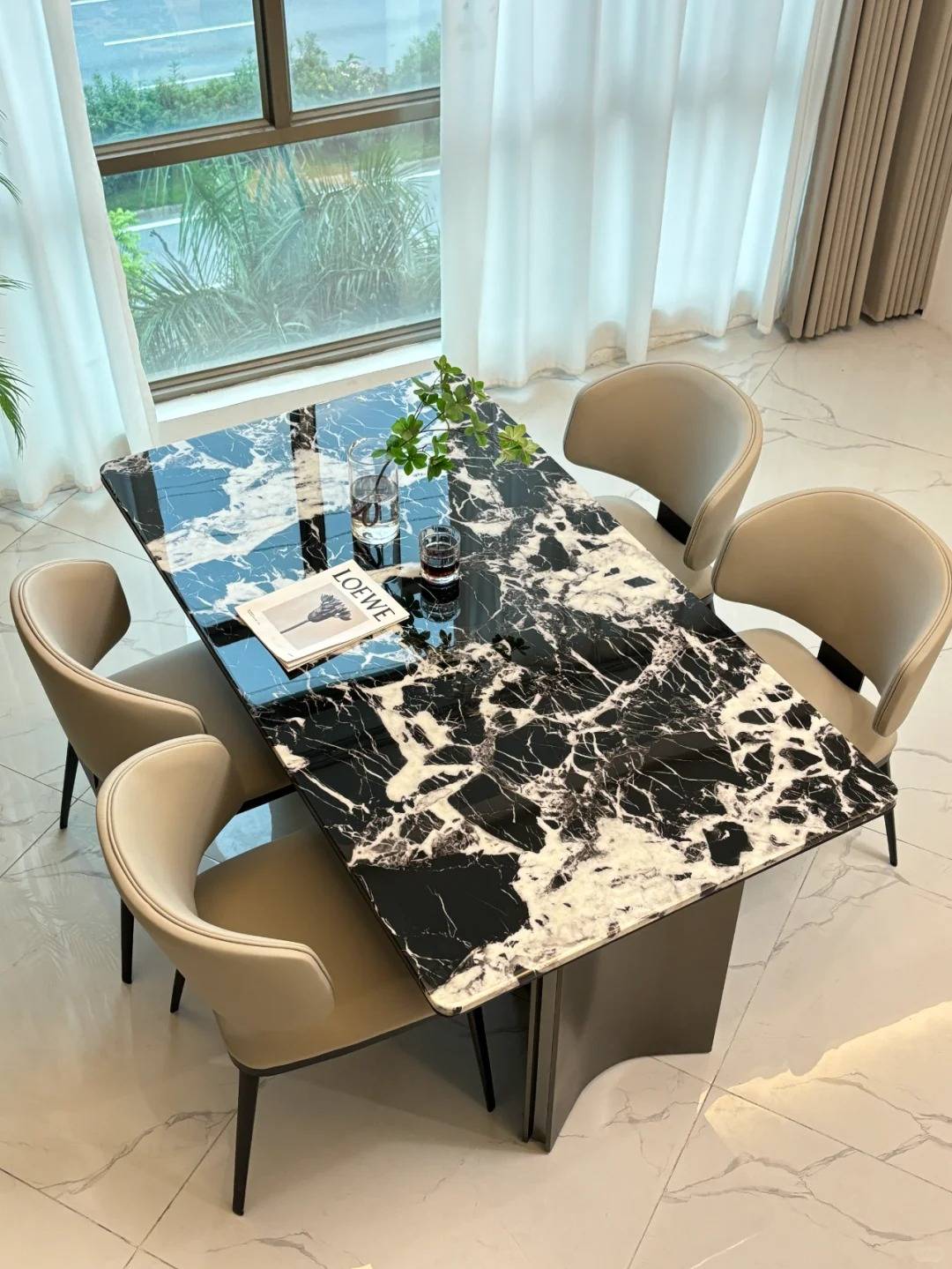
2. Consider the Table’s Shape and Size
The shape and size of your marble dining table should align with your dining space and seating needs.

Rectangular Tables:
Ideal for larger dining rooms, rectangular tables can accommodate more people. Their linear design works well in both modern and traditional interiors.
Round Tables:
These are perfect for smaller spaces or for creating an intimate dining experience. A round table encourages conversation and promotes a cozy atmosphere.
Oval Tables:
A combination of rectangular and round, oval tables offer a soft look with generous seating capacity.
Square Tables:
Best suited for compact spaces, square tables provide balanced proportions and work well in minimalist designs.
When choosing the size, consider the available space around the table. Ensure there’s at least 3 feet of clearance on all sides for comfortable movement and chair placement.
3. Assess the Veining and Pattern
Marble is a natural stone, so no two slabs are exactly alike. The veining and patterns on the table’s surface play a significant role in its overall appearance.
Subtle Veining:
If you prefer a minimalist look, choose marble with subtle and uniform veining. Carrara marble is a good example.
Dramatic Veining:
For those looking to make a bold statement, opt for marble with prominent veining, such as Calacatta or Panda White. The veining can create a striking focal point in your dining area.
Book-Matched Patterns:
Some high-end marble tables feature book-matched slabs, where the veining on adjacent slabs mirrors each other, creating a stunning symmetrical effect.
4. Evaluate the Finish
The finish of the marble table affects both its aesthetic and functionality.
Polished Finish:
A polished finish enhances the marble’s natural shine and highlights its veining. This finish is ideal for formal settings but can show fingerprints and scratches more easily.
Honed Finish:
A honed finish provides a matte, smooth surface with a softer appearance. It’s more forgiving of scratches and etching, making it suitable for everyday use.
Leathered Finish:
This textured finish adds a unique, tactile feel to the marble while reducing the visibility of imperfections. It’s a less common but highly durable option.
5. Pay Attention to the Base Design
The base of the dining table should complement the marble top while ensuring stability and durability.
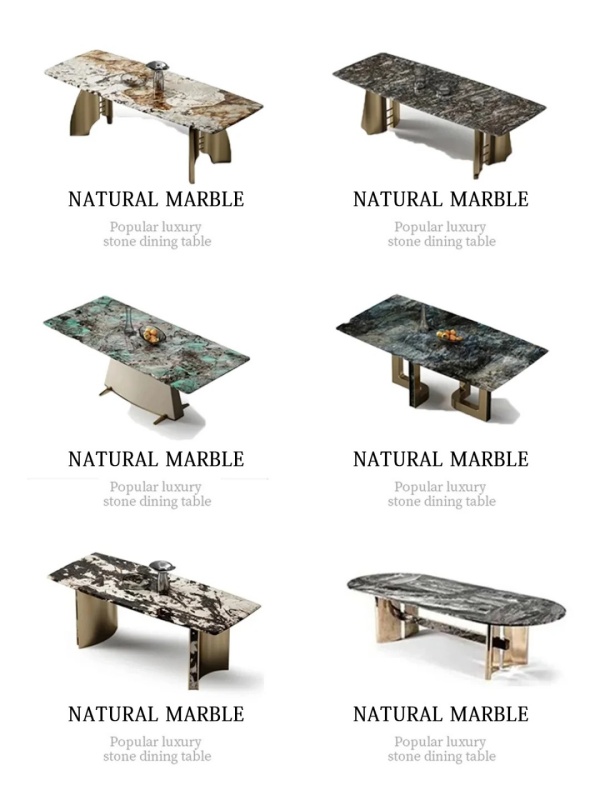
Metal Bases:
Sleek and modern, metal bases in materials like stainless steel or brass add a contemporary touch to the table. They often work well with bold marble patterns.
Wooden Bases:
Wood bases bring warmth and balance to the coldness of marble, creating a harmonious blend of materials. This combination suits rustic or traditional interiors.
Stone or Marble Bases:
For a cohesive and sculptural look, some marble dining tables feature matching stone bases. These are ideal for high-end, luxurious designs.
Pedestal vs. Legged Bases:
Pedestal bases allow for more legroom and seating flexibility, while legged bases provide a classic, structured appearance.
6. Consider Durability and Maintenance
Marble is a porous material that requires care to maintain its beauty. Before purchasing, assess the durability and maintenance requirements:
Sealing:
Marble dining tables should be sealed to protect against staining and etching from spills, especially acidic substances like wine, coffee, or citrus.
Cleaning:
Clean the surface with a damp cloth and mild soap. Avoid abrasive cleaners, which can damage the marble.
Coasters and Placemats:
Using coasters and placemats can help prevent scratches and stains.
Resistant Alternatives:
If durability is a primary concern, consider engineered marble or quartz alternatives that mimic marble’s appearance but require less maintenance.
7. Align with Your Interior Style
Your marble dining table should seamlessly integrate with the overall style of your home.
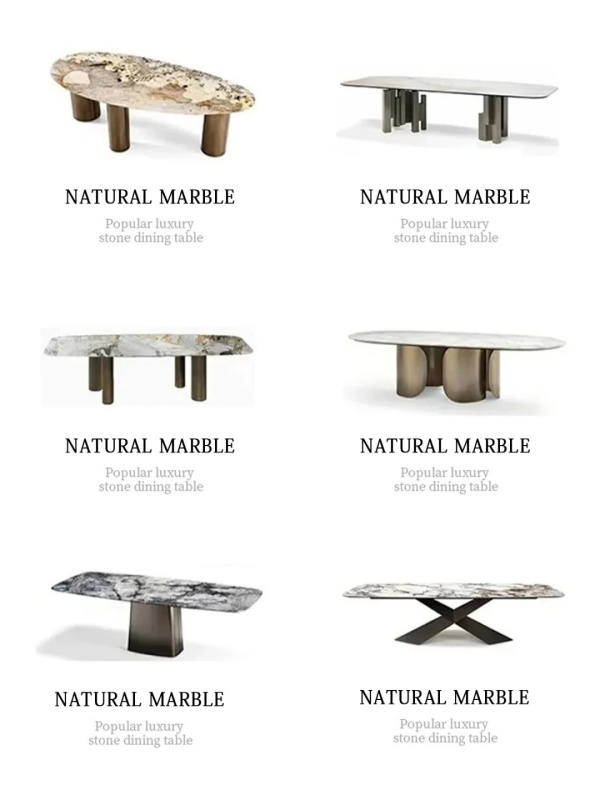
Modern Minimalism:
Choose a sleek, rectangular table with subtle veining and a metal base. Neutral tones like white or gray work well in modern interiors.
Classic Elegance:
Opt for a round or oval table with dramatic veining. Pair it with a wooden or ornate base to evoke a timeless, luxurious look.
Eclectic or Bold Spaces:
Exotic marbles with unique patterns, such as Nero Marquina or Panda White, add character to eclectic interiors.
A marble dining table is a perfect blend of beauty, functionality, and luxury. By considering factors such as marble type, size, veining, finish, base design, and budget, you can choose a table that complements your dining space while reflecting your personal style. With proper care and maintenance, a marble dining table will not only enhance your home but also become a cherished centerpiece for years to come.
Our hours
Mon - Friday : 9 AM - 6 PM
Sat - Sun : Online Service
(all hours are Beijing Time)